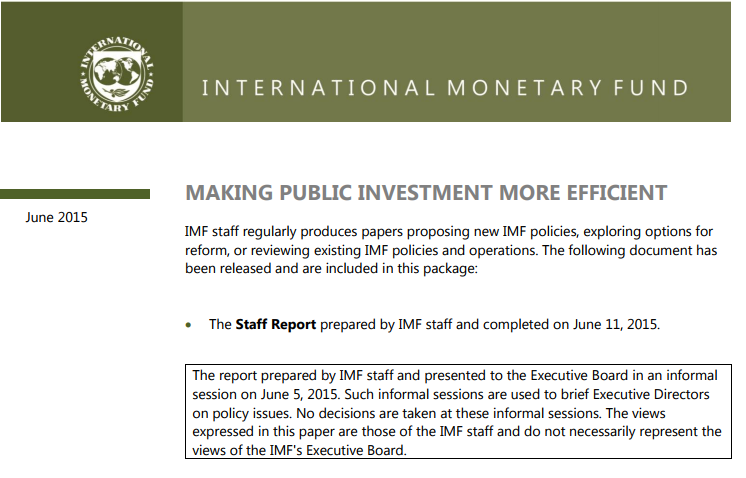Publications
Filter by
500 results found

This paper finds that better Public Investment Management enhances public infrastructure quality and economic growth, and pinpoints key institutional reforms needs to boost public investment efficiency and productivity.



The OECD Recommendation on Public Procurement is the overarching OECD guiding principle on public procurement that promotes the strategic and holistic use of public procurement.


Chinese international contractors attach great importance to corporate social responsibility (CSR), and in recent years have comprehensively promoted social responsibility-concerned ideas and practices.

The European Investment Bank (EIB) calculates the economic returns of its projects using internationally accepted methods.

The Ministry of Social Development has published guidance manuals on the procedures to be followed in the public investment process.

The checklist aims at providing a framework to ensure the mainstreaming of gender in the education sector throughout the project cycle.

The checklist aims at providing a framework to ensure the mainstreaming of gender in the health sector throughout the project cycle.

This publication assesses the current situation of gender equality and social inclusion in Nepal's agriculture and livestock sector and identifies the barriers faced by women, the poor and excluded groups in accessing agriculture services.

This publication examines the effective regulation and governance practices of the pharmaceutical sector in the Greater Mekong Subregion.

This brief analyzes the benefits and challenges of using portable screening devices to regulate medicine quality in low-income countries.

This is a study in 22 low- and middle-income countries in Asia revealing a strong positive relationship between social protection spending and health outcomes.

This publication is an assessment of the rationale for coordination between various healthcare and pension policies to better manage the cost of ageing.

This publication looks at how lowering trade barriers on health products can improve health systems.

This report analyses the school design requirements in force in LAC countries.

This publication illustrates key Disaster Risk Management concepts and reviews DRM in the school systems of six LAC countries.

This note discusses competition and consumer choice in the healthcare sector.

This report reviews the way we build our cities and how this directly impacts the safety of future generations within the context of Japan.

Japan's Program for Earthquake-Resistant School Buildings has increased the seismic safety of Japanese schools, and hence increased the safety of Japanese schoolchildren, teachers, and communities. Since 2003, when the program accelerated, the share of earthquake-resistant public elementary and junior high schools has increased, from under half of schools in 2002 to over 95 percent in April 2015. Japan is sharing knowledge from this program with developing countries through its relationship with the Global Facility for Disaster Reduction and Recovery (GFDRR), whose Global Program for Safer Schools has been supported by the Japan–World Bank Program for Mainstreaming Disaster Risk Management in Developing Countries and its implementing arm, the Disaster Risk Management Hub, Tokyo.
This article to the debate on the spatial allocation of infrastructure investments by examining where these investments generate the highest economic return (‘spatial efficiency’), and identifying trade-offs when infrastructure coverage is made more equitable across regions (‘spatial equity’).

This paper examines what factor facilitates most network expansion using micro data from 45 fixed-line and mobile telephone operators in 18 African countries by looking into network externailties and discriminatory pricing.


